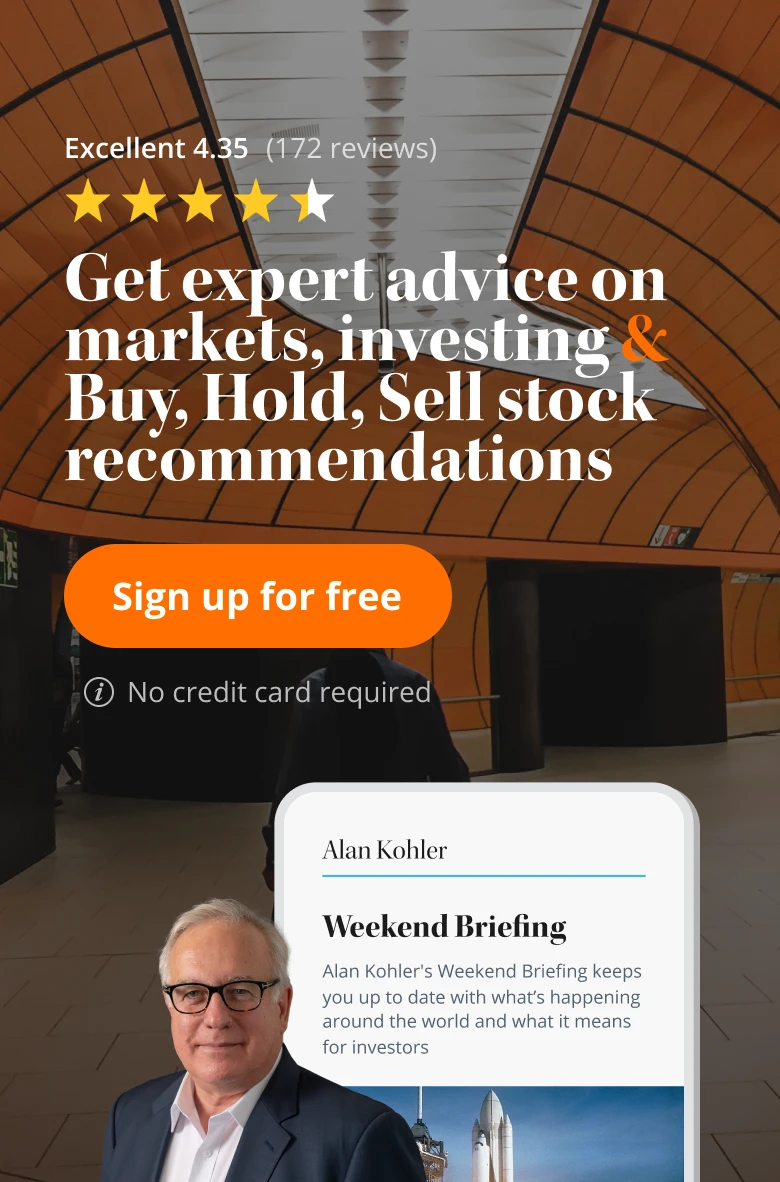A Managed Funds Primer
| PORTFOLIO POINT: Jamie Nemtsas of The Investing Times newsletter suggests what to look for ' and what to avoid ' when building a portfolio. |
The continued dominance of Australian growth assets is quite remarkable. It has been a truly golden period for Australian shares and property: 2005 was the fifth straight year that Australian shares have comfortably eclipsed returns from international shares. A relatively strong economy with robust corporate earnings, comparative insulation from the financial effects of the war on terrorism, low exposure to the until recently unpopular “new economy” sectors such as technology and health care, and an extended property price boom, has led the Australian sharemarket to being one of the world’s best performing in the new millennium. However, this has made the Australian DIY investor fall in love with these markets.
First rule of portfolio management: don’t fall in love with any investment whatsoever. It is quite common to hear from DIY investors why they don’t have international exposure in their portfolio. Given what the above indicates about Australian shares, they have been in the right place up until now!
This is not an unfamiliar story; six years ago it was the exact opposite, with international shares outperforming Australian shares for the previous five years. We also experienced DIY investors that were substantially overweight to international shares, and the rational explanation was the same: well, they have been the best for the past five years, why have any capital in the poor-performing asset classes? We suspect their portfolio is not in the best shape after the past five years.
We also understand that many people have been hurt by increasing their allocation in international markets at the wrong time, or have had negative experiences with international markets. One of the major issues is currency movements. Currency alone has had a big impact over the past few years, and can be mitigated using hedging. The other main reason DIY investors lost capital in their international exposures was that they tended to use managers with similar styles. We still see many portfolios that have several international managed funds with very similar characteristics. So we thought it worth recapping the basics of how to build a successful portfolio of international managed funds.
THREE TYPES OF EQUITY FUNDS
Index funds. These are the easiest type of international exposure to understand and use. An index fund has a passive investment style; it simply replicates the global share index. In this case it is 1800 of the largest companies in the world, this is called the Morgan Stanley Capital Index (MSCI). The fund does not have active management deciding what to buy or sell ' it simply tries to replicate the weightings of the index. Performance is relatively easy to predict, as the return will be the same as the index minus the cost of the fund. Vanguard is the main index fund player and we have no problem recommending them. The real difference in index fund providers is cost, so choose the cheapest!
Index huggers. These funds are active fund managers, with a management team making active decisions on the portfolio, however, they are bound by some very tight rules. The rules make the performance of the fund similar to that of the index ' the objective of the portfolio is to outperform the index by 3%, however we do not want to underperform by more than 3%. So there are hard limits on portfolio holdings ' how much of one stock you can buy from a specific index weighting; for example, GE is 5% of the MSCI so an index hugger would not be able to be more than 2%. So if the management team totally dislikes the stock, they still have to hold 3% of their capital in it. Vice versa, if they believe it is the best company in the world and going to double in the next six months, they can only buy 7% for the fund.
Non-benchmark aware. These funds do have rules and restrictions on how to invest, but they are not related to the benchmark in terms of geographical or individual asset restrictions. They take the capital that you allocate and invest into the best companies they can find. These fund managers are typically boutique owned and operated. However, recently a number of larger fund managers have also launched similar funds. These funds are also known as “high conviction managers” or “concentrated equity funds”.
Another breakdown on international funds is on the type of fund. You have funds that look to invest anywhere in the world, you then have specific regional funds, such as the Platinum Asia and Platinum Japan funds, and sector specific funds like Healthcare, Technology.
BUILDING AN INTERNATIONAL PORTFOLIO
Rule 1: Try not to overlap exposures by duplicating holdings. There is no use having three funds that may have three different views on the same stock, leaving you with a neutral net exposure; for example, if you have one fund overweight, one underweight and the index fund neutral, then as an investor, you are index weighted, but paying for active management! We strongly recommend that you use an index fund to provide a core for the portfolio. This will give exposure to the top 1800 companies in the world. You may choose a currency hedged or unhedged version. You will know what the performance will be relative to the index, however the index performance is the hard one to predict. As an alternative to this, you can choose to use an index hugging fund ' for growth or value or somewhere in between ' to try to get slight outperformance. However watch fees and key personnel.
Rule 2: Look to build a portfolio of non-benchmark aware funds around the index fund, again making sure that the funds you choose don’t choose stock from the same area. Choosing these managers is more difficult than you might imagine. Here are some tips that we have found successful :
- Make sure the management team has equity interest in the company they work for or in.
- Do your research and make sure that the fund managers have a long and successful history. We have seen many fund managers get lucky in a specific market, then lose that luck when the market turns.
- Fees are important, but don’t get hung up on them. Never pay entry fees and use wholesale funds where available. Performance is more important than fees. Many fund managers that we recommend strongly are at the upper end in terms of their management expense ratio (MER). When they keep performing year in year out, they are hard to go past and it is hard to complain about fees. We look at management fees as a means to an end. We know that we can revert to an index fee at a very low cost and keep performance that is index-like, so it is all about the after-fee return. If you are paying 0.5% or 1.5%, the only real thing that is important to you as an investor is the return that you get after fees.
- Look closely at the funds under management (FUM). This is less important than an Australian equity fund, but it is an issue to consider.
Rule 3: Look to add regional and sector tilts to move your portfolio into the area that will add growth to the whole portfolio (for example, being overweight China, India and Japan or healthcare and resources). Again, we recommend that you be very cautious here, not on the allocation but on the selection of managers.
We have provided profiles of four funds from four different fund managers that we highly recommend: Vanguard International Shares Index (Unhedged) fund, Platinum International fund, Hunter Hall Global Ethical fund and the Merrill Lynch Hedged Global Small Cap fund. Obviously, building a well balanced portfolio is harder than just choosing good funds. Talk to your adviser about how these funds can be added to your portfolio.
| INTERNATIONAL MANAGED FUNDS |

| HUNTER HALL GLOBAL ETHICAL TRUST | |||
| Performance |
1 Year
|
3 Year
|
5 Year
|
| (%) |
26.5
|
18.45
|
'
|
| Commenced |
Nov 30, 2001
|
||
| MER (30/6/04) |
2.01%
|
||
| Fund size ($m) |
221
|
||
| Min Investment |
$10,000
|
||
Hunter Hall Investment Management Limited is an Australian company listed on the ASX. The investment philosophy is deep value, with an ethical investment policy. The Global Ethical Trust has an international emphasis, with the portfolio bias very concentrated with generally between 30 and 60 key holdings. The investment team, even though quite small, has an impeccable record over the past 10 years. The fundamental approach of Hunter Hall is to buy a dollar’s worth of value for 50¢, therefore looking for solid value in the underlying business. The investment team has shown a good ability to select individual stocks, headed by its founder Peter Hall. Due to the nature of the fund and its concentrated portfolio, the portfolio can be quite volatile; it is totally unhedged to the Australian dollar.
| MERRILL LYNCH GLOBAL SMALL CAP FUND HEDGED | |||
| Performance |
1 Year
|
3 Year
|
5 Year
|
| (%) |
28.1
|
27.12
|
'
|
| Commenced |
Mar 26, 2001
|
||
| MER (30/6/05) |
1.60%
|
||
| Fund size ($m) |
5.9
|
||
| Min Investment |
$25,000
|
||
Merrill Lynch manages more than $A629 billion for clients around the world, and approximately $A7.5 billion in Australia. The fund invests in a selected portfolio of 120 to 140 securities listed on international stock exchanges that have been defined as “small capitalisation” stocks; that is, companies that typically have a market capitalisation of $US1–2 billion. The fund manager tries to maximise capital growth through exposure to a globally diversified portfolio of shares listed on various international stock exchanges. The fund comes in two versions; the hedged version is our choice as it should have less unit price volatility than the unhedged version.
| PLATINUM INTERNATIONAL FUND | |||
| Performance |
1 Year
|
3 Year
|
5 Year
|
| (%) |
20.68
|
16.41
|
11.83
|
| Commenced |
Apr 4, 1995
|
||
| MER (30/6/04) |
1.54%
|
||
| Fund size ($m) |
$6,987.80
|
||
| Min Investment |
$25,000
|
||
Platinum Asset Management was set up by Kerr Neilson in 1994 to beat the MSCI World Index by picking undervalued stocks worldwide. The international fund is its flagship fund. The group takes a contrarian view to investment management, by looking to invest in those stocks that are “unloved” or “forgotten” by investors in the market, and whose share price does not reflect the underlying value of the company’s future earnings stream. The fund also has a higher level of cash and liquid securities compared to other managers in this sector, which reduces the overall volatility of the fund, given the manager’s large active industry and country positions. The fund has some hedge fund characteristics, like short selling relevant indexes and stocks. This reduces the volatility in the unit price over the longer term and enables it to produce returns in declining markets.
| VANGUARD INT'L SHARES INDEX (UNHEDGED) | |||
| Performance |
1 Year
|
3 Year
|
5 Year
|
| (%) |
16.82
|
8.42
|
– 3.58
|
| Commenced |
Jun 6, 1997
|
||
| MER (30/6/04) |
0.36%
|
||
| Fund size ($m) |
$3,580.60
|
||
| Min Investment |
$5,000
|
||
The fund ultimately seeks to replicate the MSCI World ex-Australia Index. The fund is managed by Vanguard Investment Australia Ltd. Vanguard Investments Australia Ltd is a wholly owned subsidiary of the Vanguard Group Inc. based in the US, which currently manages more than $750 billion of index funds worldwide. The benefits of indexing include broad diversification, relative predictability, low costs, low brokerage and competitive long-term performance. The MSCI index includes more than 1800 of the largest companies listed on the exchanges of 22 countries.
Jamie Nemtsas is a senior adviser and director of Investstone Wealth Management Pty Ltd (publisher of The Investing Times)
















